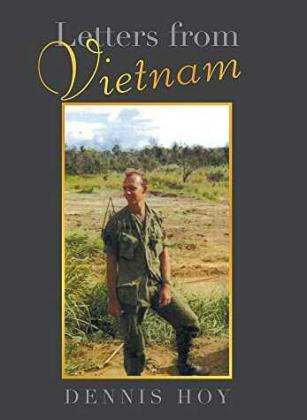Dennis was 24 years old and within one semester of graduation from college when his draft board notified him he would be drafted. He worked for the railroad and had a small business,; an archery shop. His business experience and age gave him a maturity lacking in most of the others in his company, who were 18, 19 and 20 years old. This leadership would show up later in his service career and eventually in civilian life. He and his girlfriend Beth decided to marry before he left. They felt that as a married couple, they would have more opportunities to be together during his term of service. Dennis’s wife and parents became very close and one thing they did to support the family was to save all of his letters. They kept all of the letters he wrote to them between 1966 and 1968. When friends of Dennis found out about this collection, he was encouraged to write this book. The book was published in 2021 so it contains a lot of contemporary commentary as well as factual reporting by someone who was on the scene. Unlike some books based on letters, this book is written in regular text rather than being just a collection of letters. The information in the letters is used to support the factual material. Also, a lot of other information is included, information not easily compiled, such as dates, places, outcomes of various actions and casualties.
In several instances, Dennis steps out of his role of soldier to make comments about and description of certain actions and their results. Sometimes he changes or deletes the names of real people and places but generally he uses real data. And, his letters were subject to security regulations so sometimes he uses code names.
Dennis is generous with credit to those who helped him, both during his time in the army and with the writing of the book. He gives special thanks to his wife, without whom his life would not have been the same. He mentions the terrible loneliness of his tour of duty and credits her with helping him withstand it. He also credits his connection with the Potawatomi for their teachings of wisdom, respect, love, honesty, humility, bravery, and truth. He hopes this book calls attention to the fact that Native Americans have served in the military at a higher per capita rate than any other ethnic group. Approximately 42,000 Native Americans served during the Vietnam War. Of these, 90 percent were volunteers. He hopes that veterans from all eras will be able to glean something from this record of his experiences during a time when the very meaning of military service was being questioned. For those of you who shared the Vietnam experience, some of Dennis’s account may ring true. For those of you who haven’t, it may help you understand some things that were confusing before. Whoever you are, this book may help you understand some things that were a mystery. The book is well written and full of information about an important part of our nation’s history. I highly recommend it to anyone who would like a better understanding of this time.

